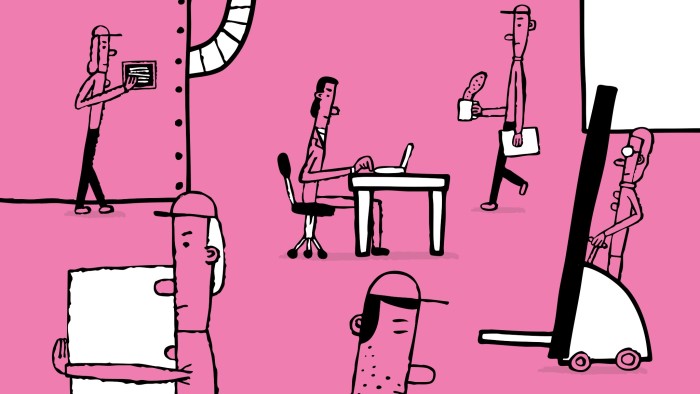On the day of the US election this week, I was struck by a familiar sense of anxiety, dismay and dread.
This had almost nothing to do with the election and everything to do with my decision to spend time that day on the FT’s main news desk.
In the interests of research, I wanted to see what the job of news editing looked like since I last worked on that desk in London many years ago.
Clearly much has changed since. The homepage is all-consuming; an entirely different team of editors handles the printed paper. But much is still the same, like the stomach-grinding anxiety about inserting an error in the rush to publish. And the heart-stopping fear of receiving a late, garbled story needing not so much editing as open-heart surgery. And the remorseless speed of the work.
“You all right?” muttered the news editor, a man I’ve known for close to 20 years, as I faffed about trying to log in to the first morning news meeting of top editors. Flustered, I finally got the sound on as he was explaining why I was there, whereupon I thanked him and called him Tim instead of his actual name, which is Tom.
This was a reminder of something I had forgotten in my years away from that work. It is so much harder than it looks from the outside.
The experience confirmed that business leaders who do what Boeing’s new chief executive, Kelly Ortberg, did the other week deserve much credit.
When Ortberg set out his plans to restore faith in the beleaguered aerospace giant, he highlighted one in particular: putting executives on factory floors as part of “a fundamental culture change”.
“We need to know what’s going on, not only with our products, but with our people,” he said. “We need to prevent the festering of issues and work better together to identify, fix, and understand root cause.”
This seems obvious for any company, let alone one reeling from the aftermath of two fatal crashes of its top-selling 737 Max aircraft.
Yet if it really were apparent, there wouldn’t be headlines whenever someone like Ortberg issues such an edict. Or Home Depot tells corporate office staff to work a full day at one of its stores each quarter, as it did this year. Or Uber’s CEO, Dara Khosrowshahi, reveals he has been moonlighting as a driver, as he did last year.
Maybe more bosses than we hear about spend time answering customer complaints on social media, such as Greg Jackson, chief executive of the UK’s Octopus Energy power supplier. Or decide a human can adjust a car window seal faster than a robot by trying it himself on an assembly line, as Elon Musk did at Tesla.
But I doubt it. For one thing, few CEOs are like Musk. Also, running a business is hard. It can be easy to get caught up in the daily crossfire of drama. When Khosrowshahi was driving a customer to the airport one night, he had to ignore what the Wall Street Journal said were frantic phone calls from his chief legal officer trying to tell him the company’s network had been hacked.
It also takes a lot of confidence to expose yourself to the ridicule of underlings who know more about how a job is done, especially for CEOs unfamiliar with the industry they join.
But I suspect many executives shy away from the shop floor because they have succumbed to an aspect of power poisoning, or the way behaviour changes when you reach the top.
In this case, they think that, because they are in charge, they understand everything they need to know in order to lead well, even when they palpably don’t. Academics call this the fallacy of centrality and it can be a dismaying thing to watch. Ask any worker repeatedly asked to do something provably unworkable by a clueless boss.
Of course, hands-on experience alone does not guarantee success. Laxman Narasimhan did 40 hours of barista training before taking over as CEO of Starbucks and last year said he would keep working behind the counter for half a day each month. He was ousted 17 months later. Falling sales and an activist investor will probably always beat even the finest Frappuccino technique.















































































































































































You must be logged in to post a comment Login